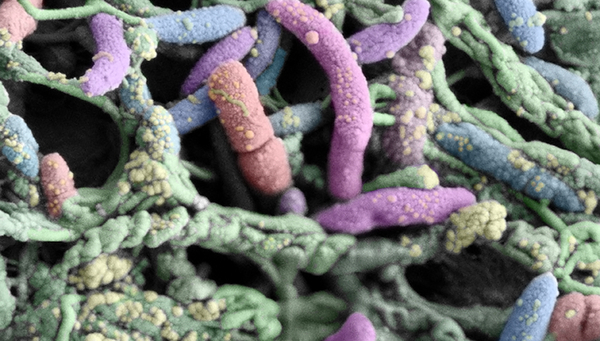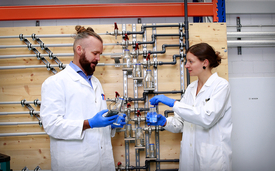News Detail
Legionella control efforts intensified in Switzerland – new “LeCo” project launched
March 3, 2020 |
Legionnaires’ disease is becoming more common in Switzerland: 582 cases were recorded by the Federal Office of Public Health (FOPH) in 2019 – twice as many as in 2013. The disease is fatal in five to ten per cent of cases, despite treatment with antibiotics.
The causative agent is Legionella pneumophila, a type of bacteria found in water. Problems may arise if contaminated fine water droplets are inhaled. This can occur wherever such droplets are generated – in car wash facilities, air-conditioning cooling systems or industrial cooling towers. Under certain conditions, however, legionella can also develop in drinking water, fountains, steam baths and showers.
But how do these pathogens enter building plumbing systems? Most bacteria and nutrients are removed at the central treatment plants which provide municipal water supplies. Concentrations also remain low in distribution networks – the pipes which convey drinking water to buildings. “But then things become more problematic,” says Frederik Hammes of the Environmental Microbiology department at Eawag: water is heated in buildings, and as legionella bacteria grow best at temperatures between 35 and 40°C, they can colonise hot-water systems. Although legionella can be killed by heating water to 60°C, this temperature is rarely attained in showerheads, for example. In addition, in order to save energy, boiler temperatures in many buildings are set below 60°C. Legionella can, however, also proliferate in cold-water pipes if the water regularly reaches warmer temperatures. Other factors known to promote proliferation are nutrients leaching from plumbing materials and inadequate exchange of water (stagnation). But many questions remain to be resolved – for example, how precisely the occurrence of legionella in the environment is related to human infection, or how legionella can be most effectively detected in drinking water pipes.
Franziska Rölli of Lucerne University of Applied Sciences and Frederik Hammes investigate how pathogenic legionella bacteria develop in drinking water. This involves analysing water samples from various hot water pipes.
Photo: Aldo Todaro
For this reason, the Federal Food Safety and Veterinary Office (FSVO), the Federal Office of Energy (SFOE) and the Federal Office of Public Health (FOPH) are now providing CHF 2.5 million in funding for a four-year, Eawag-led multidisciplinary project – “Legionella control in buildings (LeCo)”. Participating alongside the Eawag research groups led by Frederik Hammes (Drinking Water Microbiology) and Tim Julian (Pathogens & Human Health) are the Lucerne University of Applied Sciences (HSLU), the Swiss Tropical and Public Health Institute (Swiss TPH) and the Zurich Cantonal Laboratory (KLZH).
Julian, in collaboration with Swiss TPH, will be studying the relationship between legionella concentrations in shower water and the incidence of legionnaires’ disease. More specifically, using mathematical modelling, the researchers wish to determine the likelihood of infection at various legionella concentrations.
The project will also be focusing on the improvement of sampling. For, in a federal ordinance which came into effect in 2017, a limit of 1000 colony forming units per litre is specified for legionella in showers accessible to the public. But bacterial community composition in plumbing systems varies, which complicates sampling. Franziska Rölli of the Institute of Building Technology and Energy at HSLU says: “To increase the reliability and comparability of samples, we need to optimise and standardise collection methods.”
Rölli also emphasises the importance of awareness-raising and communication: architects, planners, plumbers and building operators are often not sufficiently familiar with the issue of legionella. Accordingly, in addition to research activities, the project consortium is committed to disseminating new findings – for example, via workshops or seminars.


